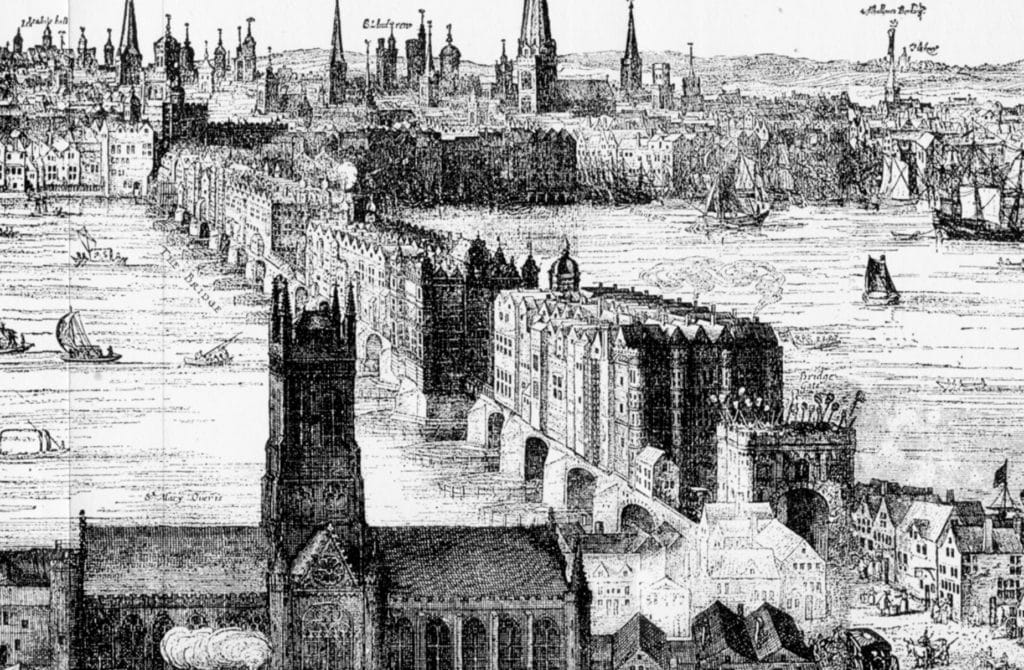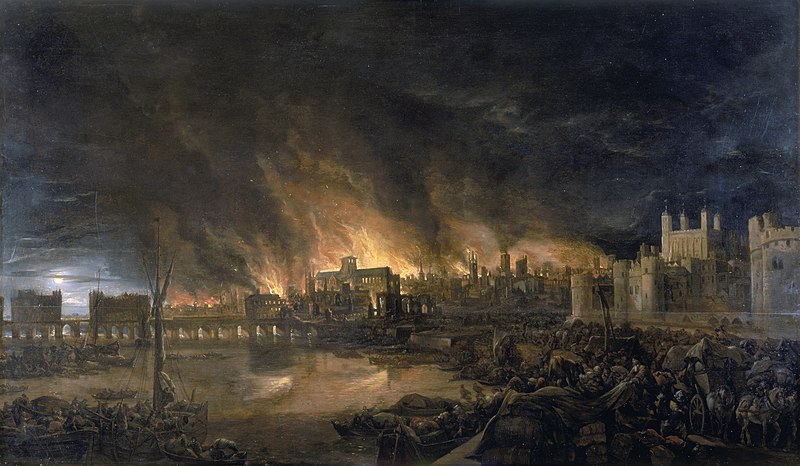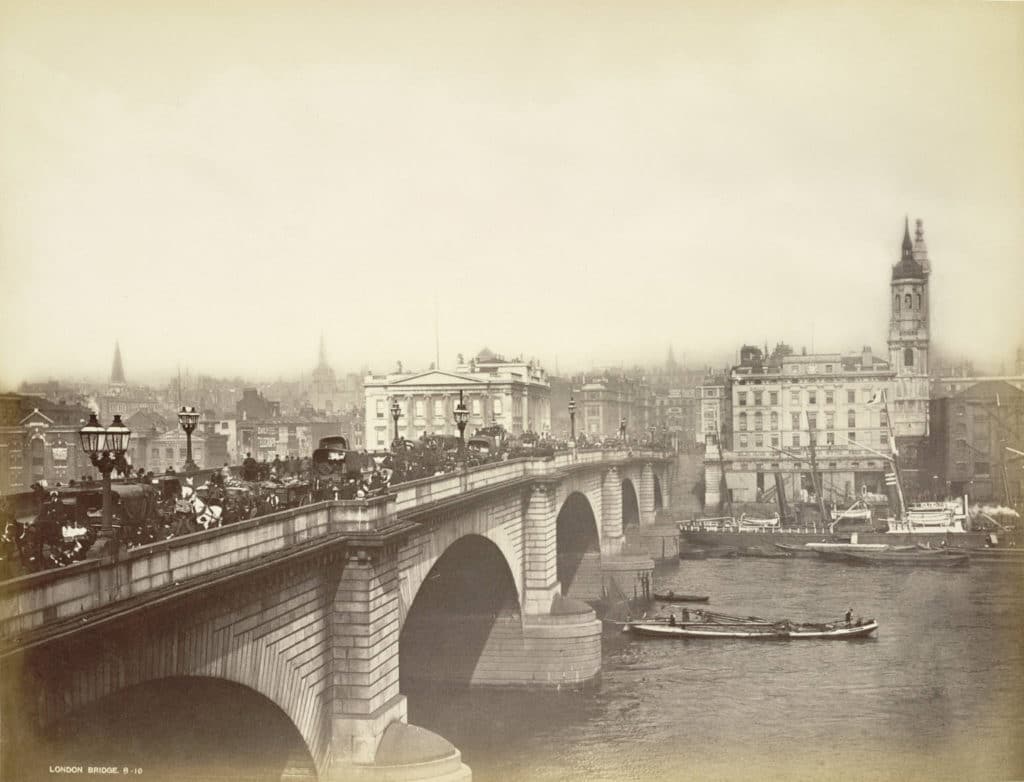Last updated on July 21st, 2022 at 11:06 pm
There are over thirty major bridges over the River Thames in London today. This is quite a small number for a city of nearly ten million people. Londoners, though, primarily get around their city on the underground rail system.
Otherwise, many more bridges would be needed to facilitate weekly hundreds of thousands of more cars going north and south of the river.
Because there are so few of them, the city’s main bridges are central to the city’s history and that of broader England.
They appear regularly in the vast literature that has emerged in England over the centuries. Moreover, many of them are known worldwide by people who have never been to Britain’s capital.
None is more esteemed than the oldest of these links over the Thames, London Bridge, a riverine crossing that even has its famous nursery rhyme. Here we look at the bridge and where the rhyme concerning it originated.

London Bridge
London Bridge is right in the center of London today. It connects the City of London on the northern bank of the Thames, a small region of central London approximating the medieval borough of the city, with the district known as Southwark on the south bank.
It is a stone’s throw from some of London’s most famous sites, notably the Tower of London, the Shard, the Monument to the Great Fire of London, and the Tate Modern.
The Romans first built the bridge to traverse the Thames quickly when visiting Londinium, their name for the town established here.
Following the abandonment of Roman Britain by the Romans in 410 AD, the bridge fell into disrepair and collapsed. Still, it was rebuilt several centuries later, possibly at the behest of Alfred the Great.
It was destroyed again during the Danes’ invasions in the late tenth or early eleventh centuries.
After that, William, the Conqueror, had a new bridge built in the 1070s, which was destroyed by a fire in 1136.
In 1209 King Henry III had a new bridge once again built, an impressive one of stone and solid construction. It lasted down to 1831 and was such an enormous riverine crossing that people built their homes on top of the bridge for several centuries and lived there.
Yet even during this prolonged period of supposed stability, the bridge often suffered extensive damage and had to be repaired. Such was the case in 1666 when the Great Fire of London destroyed much of the city.

London Bridge did not collapse in the conflagration, but it was badly damaged and destabilized and had to be repaired extensively afterward.
By the late eighteenth century, as London grew to become an enormous metropolis, traffic over the bridge increased dramatically, and it was realized that a new modern bridge was needed.
After many years of construction, New London Bridge opened in 1831. It lasted until 1967 when a more modern box girder bridge entered construction.
This iteration of it, which opened in 1973, is that which one will see if they visit London today. Thus, there have been at least six major versions of the bridge, and earlier versions suffered frequent damage owing to fires, wars, or simple collapse over time.
This chequered history needs to be born in mind when considering the nursery rhyme which emerged about the bridge many years ago.
The Nursery Rhyme
The nursery rhyme ‘London Bridge is Falling Down’ had emerged mainly in its final form by the mid-eighteenth century.
In 1744 it was printed in full in Tommy Thumb’s Pretty Song Book, an anthology of popular nursery rhymes used in England at the time, which includes others such as ‘Baa Baa Black Sheep’ and ‘Hickory Dickory Dock.’
The rhyme, as published by the pseudonymous Tommy Thumb, goes as follows:
London Bridge is falling down,
Falling down, falling down,
London Bridge is falling down,
My fair Lady.
Build it up with wood and clay,
Wood and clay, wood and clay,
Build it up with wood and clay,
My fair Lady.
Wood and clay will wash away,
Wash away, wash away,
Wood and clay will wash away,
My fair Lady.
Build it up with bricks and mortar,
Bricks and mortar, bricks and mortar,
Build it up with bricks and mortar,
My fair Lady.
The Origins of London Bridge is Falling Down
So, where did this nursery rhyme come from?
The short answer is that nobody can be entirely sure. But the long answer can certainly narrow it down.
The earliest references to a version of ‘London Bridge is Falling Down’ are to be found in the mid-seventeenth century when it was referred to in The London Chaunticleres, an anonymously authored play that was first published in the late 1650s, but which was probably authored and first performed in the mid-1630s.
It appears to have been used as a nursery rhyme by the reign of Charles II, who ruled England, Scotland, and Ireland from 1660 to 1685.
It then entered widespread use by the early eighteenth century, and as well as Tommy Thumb’s collection of nursery rhymes, there are numerous other allusions to ‘London Bridge is Falling Down’ from the 1720s onwards.
Thus, the rhyme’s origins in England can be traced to the seventeenth century, specifically the period between the 1630s and the 1680s, with knowledge of it being widespread by the eighteenth century.
However, its wider origins are likely to be found in the late medieval period when similar rhymes referring to bridges on the Seine, Rhine, and other major continental rivers were being used in Germany, France, and other regions.
English versions evolved in the sixteenth century, and the seventeenth century became closely associated with London Bridge.
What Does it Mean?
While we can trace the rhyme’s origins to the seventeenth century and its evolution from other rhymes concerning bridges, the question is, why did the rhyme become intimately associated with London Bridge at this particular time?
The answer is to be found in the history of the bridge itself and of London in the early modern period. London was growing as a major metropolis in England at the time. Its population expanded from approximately 50,000 people in 1500 to 200,000 in 1600.
Then it tripled to nearly 600,000 in 1700 and was nearing three-quarters of a million souls by the time ‘London Bridge is Falling Down’ was published in 1744.

The population swelled. London Bridge, the only major bridge over the Thames at that time, became central to the lives of Londoners.
Additionally, many of them might have been familiar with a continental rhyme concerning bridges falling and began to associate this with London Bridge, which, after all, had a long history of being destroyed or collapsing and having to be rebuilt.
This was compounded in 1666 when the Great Fire badly damaged the bridge, and it had to be repaired extensively. So it is hardly a coincidence that ‘London Bridge is Falling Down’ appeared in its modern form right around this time.
Thus, ‘London Bridge is Falling Down’ originated as a European rhyme associated with bridges falling in general and became firmly associated in England with London Bridge as a result of the specific history of the City of London in the seventeenth century.

